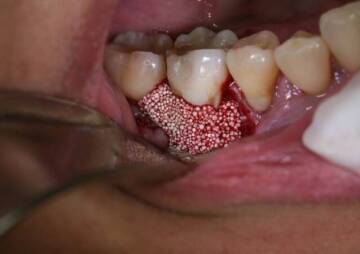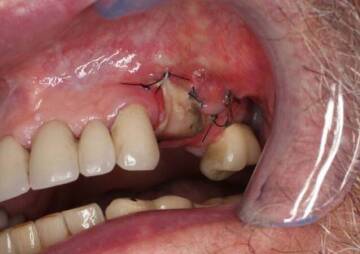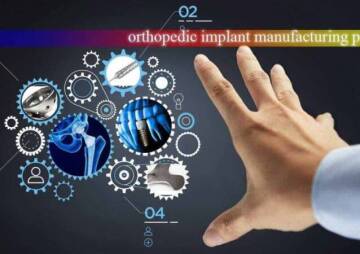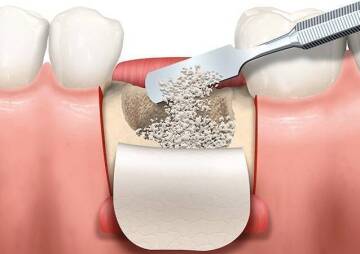-
Category
Craniomaxillofacial Surgery
Orthopedic Surgery
Spine Surgery
Orthopedic Implants
Hip Surgery
Knee Surgery
Pectus Excavatum
Bone Graft
Disinfectants
Healthcare
Bone graft failure

Bone graft failure is not something you can always expect, but it can happen. In this article, you can find out the reasons for bone graft failure and how to find out if a bone graft has been rejected.
Bone graft rejection is not an incident that happens all the time, but there is a possibility for its occurrence.
We use many methods to repair the skeletal defects in orthopedic and dental surgeries, and the bone graft is involved in almost most of them. Bone graft supports the damaged bone and helps it to regenerate. This operation has numerous advantages, but sometimes rejection happens.
You might be worried about bone graft rejection if you are a candidate for bone graft surgery or have done it before. So, you should know the symptoms of this difficulty to see your doctor in the case of its occurrence. Read till the end of this article to receive the answers to all of your questions.
Bone graft and its necessity
To understand why bone graft is essential, you should first have some information about it.
Bone grafting is a surgical operation in which the grafted bone is used to repair and regenerate diseased or damaged bones. This method is used for repairing the bones of every spot of the body, from vertebral column bone to the jaw bone.
Bone graft has various types, the natural type, and artificial type. The natural graft uses real bones. According to the source of the bone graft, there are three types: autograft, allograft, and xenograft.
For more information about different types of bone grafts, read the article what is a bone graft?
During a bone graft, the surgeon implants the graft section into the areas that need repair. The grafted section cells link to the damaged bone cells and create a new bone matrix.
It might be a question for you that why do we use the bone graft despite the capability of bone for regeneration?
If the damages to the bone are not severe, the osteocytes will start to repair the damaged site. However, sometimes, the damages are so severe that natural bone regeneration is not possible. In this case, you will need a bone graft.
Severe and multiple fractures, acute bone diseases such as osteonecrosis or cancers, spinal fusion surgery, bone damages due to the infection, gingival disease, jaw bone damages, and developmental anomalies of the jaw are some cases that the bone graft is used for treating them.
Bone graft risks
Despite the advantages of the bone graft, sometimes it has some risks and complications. Pain and swelling, nerve damage, inflammation, infection after the bone graft, complications of anesthesia, and in the worst case, bone graft rejection are some of the risks that the bone graft can causes.
It might be a question for that why is a bone graft rejected? In the following sections of the current study, we will investigate the reasons for bone graft rejection and the symptoms that show your surgery has failed.
Reasons for bone graft failure
Bone graft rejection is not an ordinary incident, but sometimes some reasons cause the rejection of the grafted bone, such as:
Bone graft infection
Infection is the most crucial reason for bone graft failure. Although this complication is infrequent, various factors affect its occurrence.
- Using a non-sterilized and contaminated bone graft
- Non-expert surgeon or dentist and using incorrect surgical techniques.
- Contaminated instruments and field of the surgery
- Poor postoperative care
Dental bone and other bones graft infection symptoms usually appear shortly after the operation. These symptoms include swelling and redness, malaise, dysgeusia and halitosis, fever, pain, and bleeding.
Exposed bone graft
In a dental bone graft, sometimes the bone graft exits from the gingiva and is exposed because of the gingival recession. In this circumstance, the blood supply of the grafted section is disrupted, and the graft will be damaged. We can overcome this complication with antibiotics at the early stages. However, if this complication is severe, bone graft removal is necessary.
Smocking
Nicotine, Carbon monoxide, and Hydrogen cyanide of cigarettes are the factors that have negative effects on bone vascular reconstruction and can cause poor wounds healing and graft failure.
Systemic condition of the patient such as uncontrolled diabetes
Both osteopenia and delayed bone healing are two attributes of diabetes disease, which will cause complications occurrence and bone graft failure.
However, there are some other factors that can increase the bone graft failure rate:
- Periodontal disease
- Osteoporosis
- Surgical errors
- Immunodeficiency
- And other diseases
Dental bone graft rejection symptoms
Multiple symptoms might show that your bone graft was not successful. Some symptoms appear three to four months after the surgery, such as:
- Severe and long-term pain and swelling, which increase over time.
- High bleeding and oozing from the surgery field.
- Gingival recession and exposure of the grafted bone
Sometimes bone graft failure occurs six to twelve months after the surgery, with entirely different symptoms. These symptoms include:
- Clenching excessively the teeth together
- Affected by multiple oral bacterial infections
- Despite regular care, the health condition of the mouth does not get any better.
- The gingiva has been recessed in the surgery field.
- Pain in head and neck
- Pressure sense during eating and masticating at the implant area.
If you notice these symptoms, and they were continuous, you must see your doctor to investigate the bone graft health. If these symptoms are because of bone graft rejection, so bone graft removal must be necessary. And the bone graft will be done again after the healing.
Which type of bone graft has more failure rate?
Generally, autogenous bone grafts have more survival rate and less failure rate in comparison with other grafts. Allograft infection is one of the principal reasons for spinal fusion bone graft failure.
In the case of using xenograft, the possibility of allergy occurrence is higher than other grafts.
In the case of using an artificial bone graft, everything depends on the quality of the received bone graft. High quality, porous, and bioactive artificial grafts which connect to the damaged bone by a specialist and experienced, minimize the bone graft failure rate as low as possible.
Where can we purchase a bone graft?
We can purchase one of the best quality bone grafts from the Health News Center website. These grafts successfully passed all the quality tests.
If you are one of the doctors that have done bone graft for dental implants or any type of bone graft, share your experiences at the end of this article. Your experiences, in addition to increasing the readers' information, also can help people who are a candidate for bone graft and reduce their anxiety.






